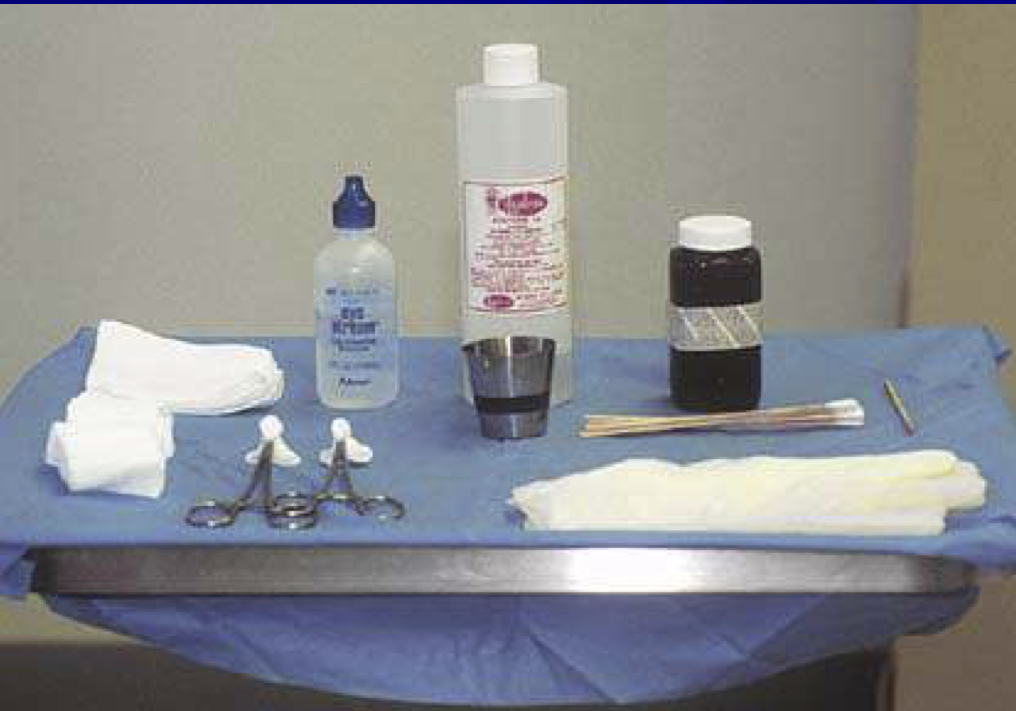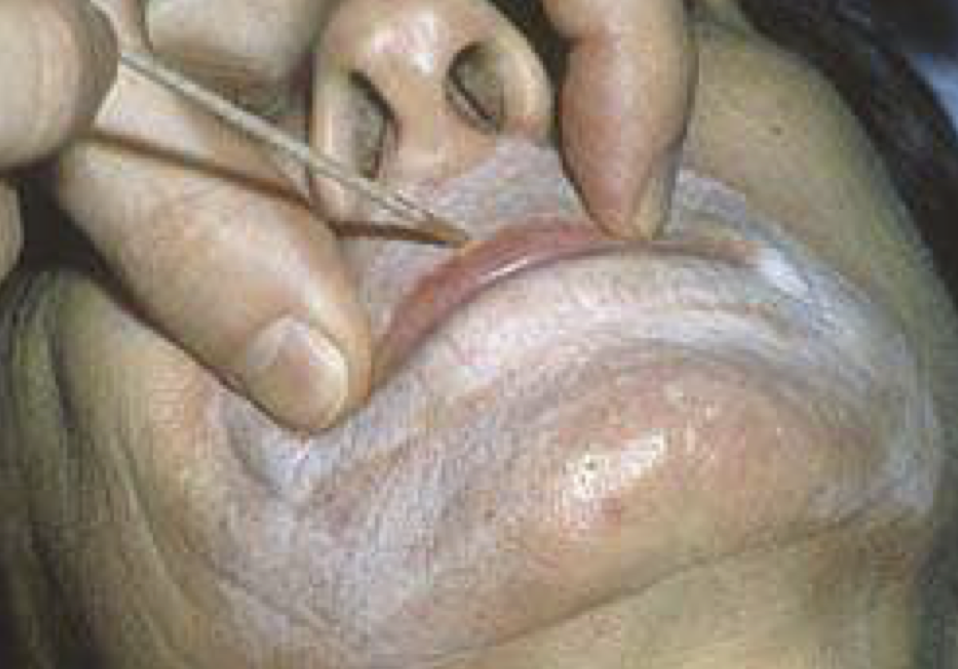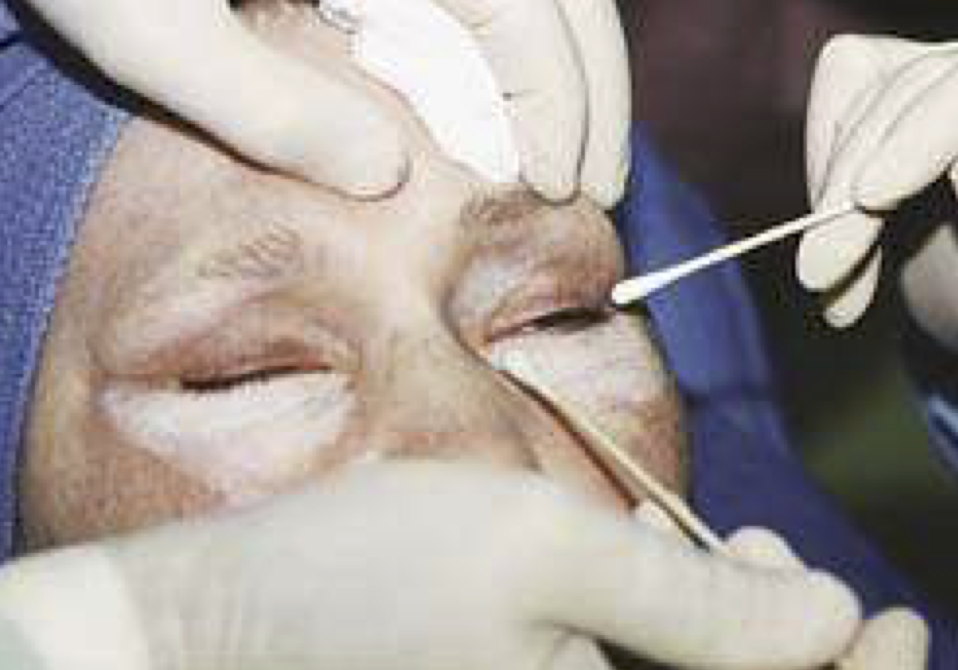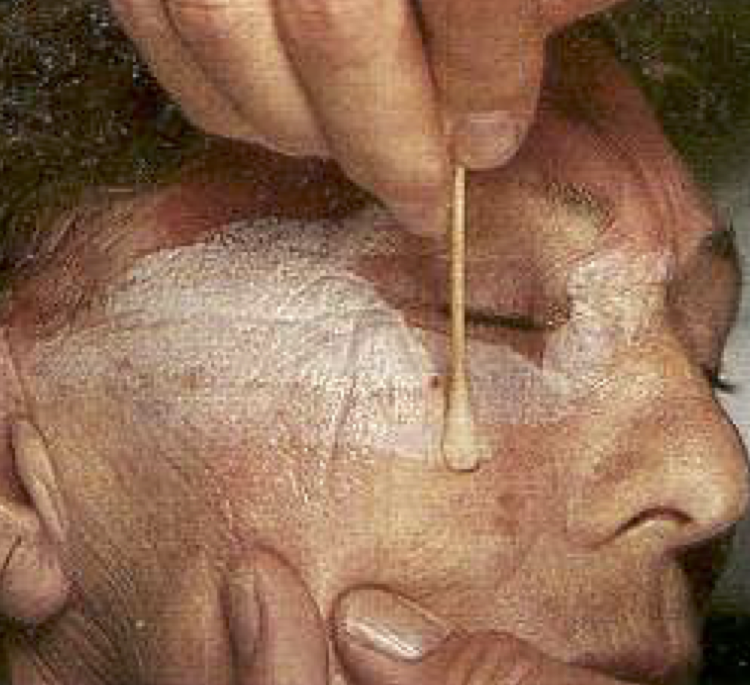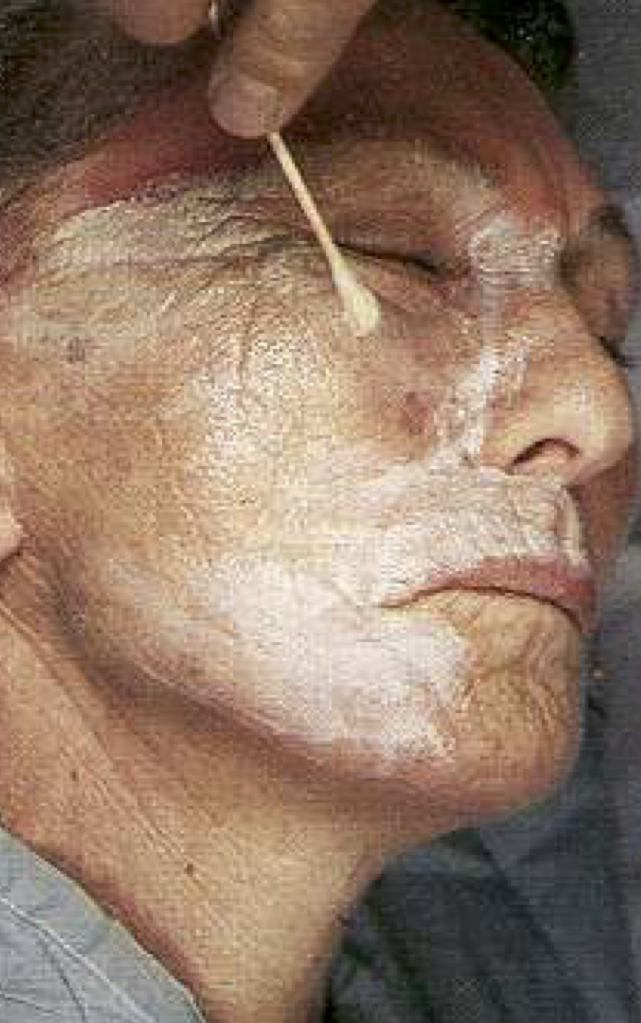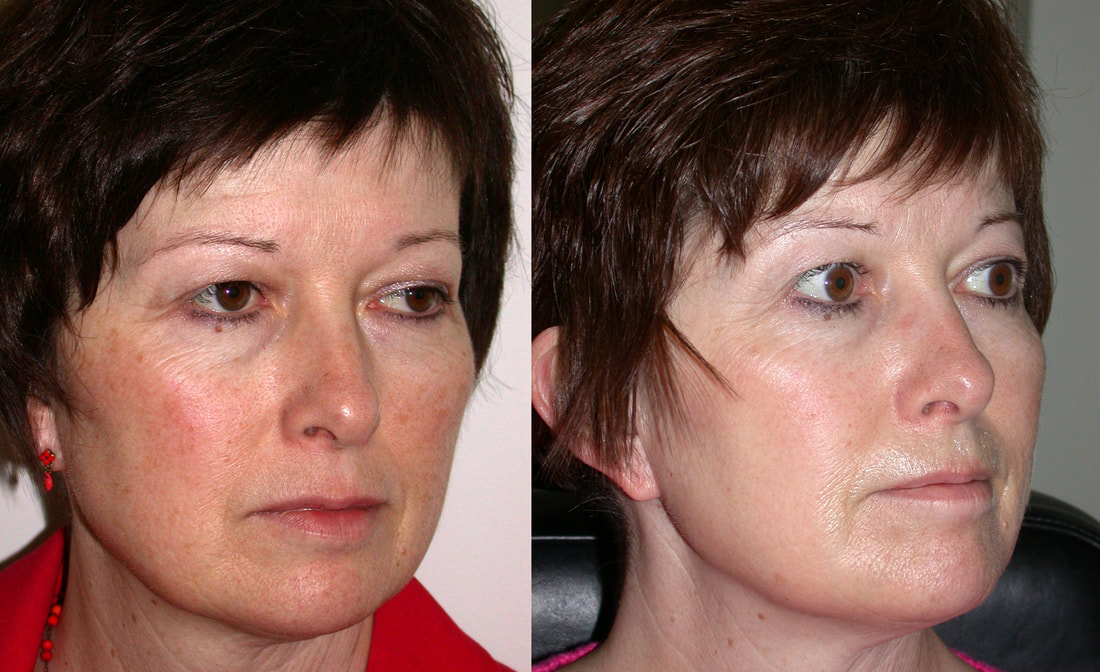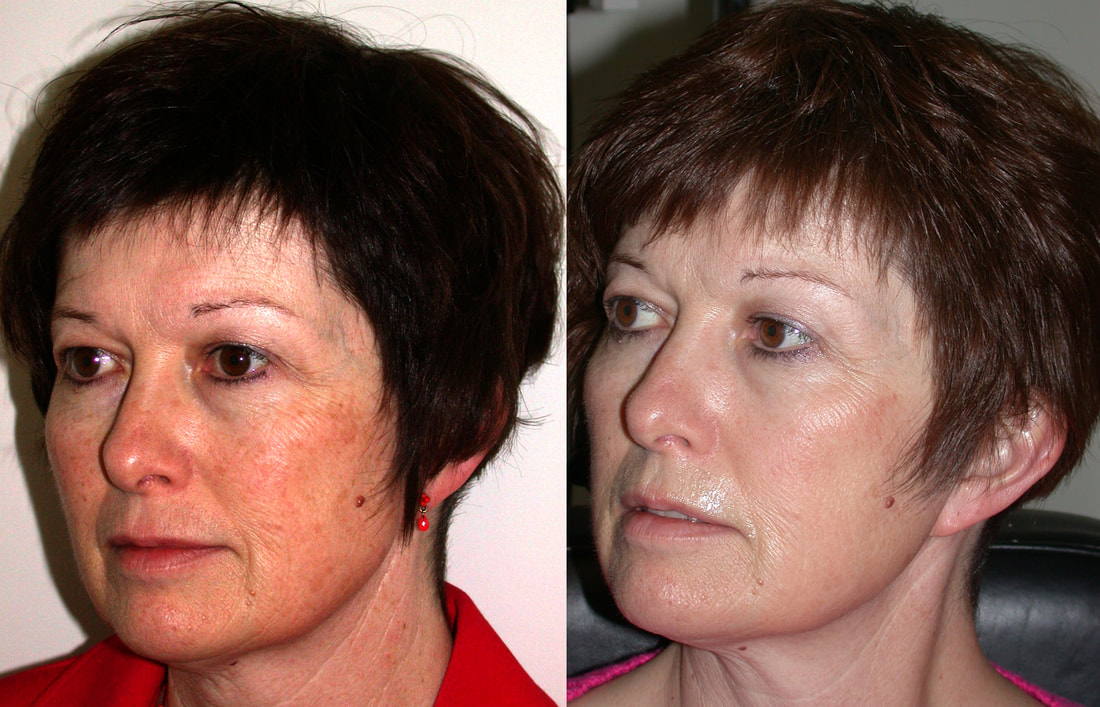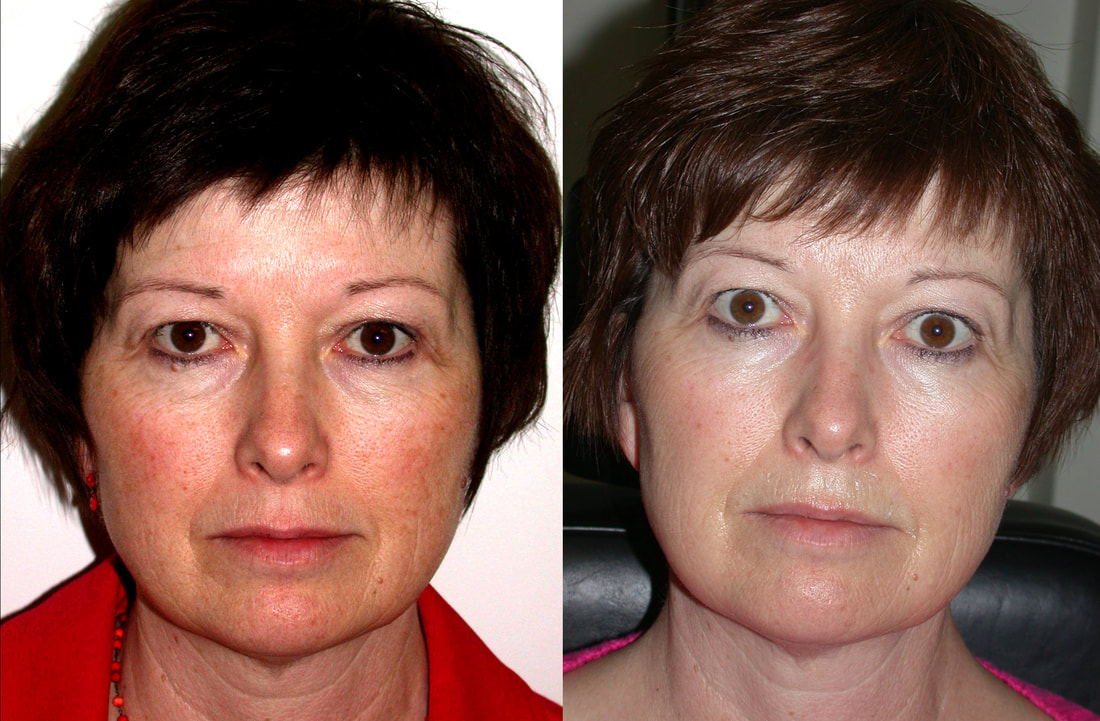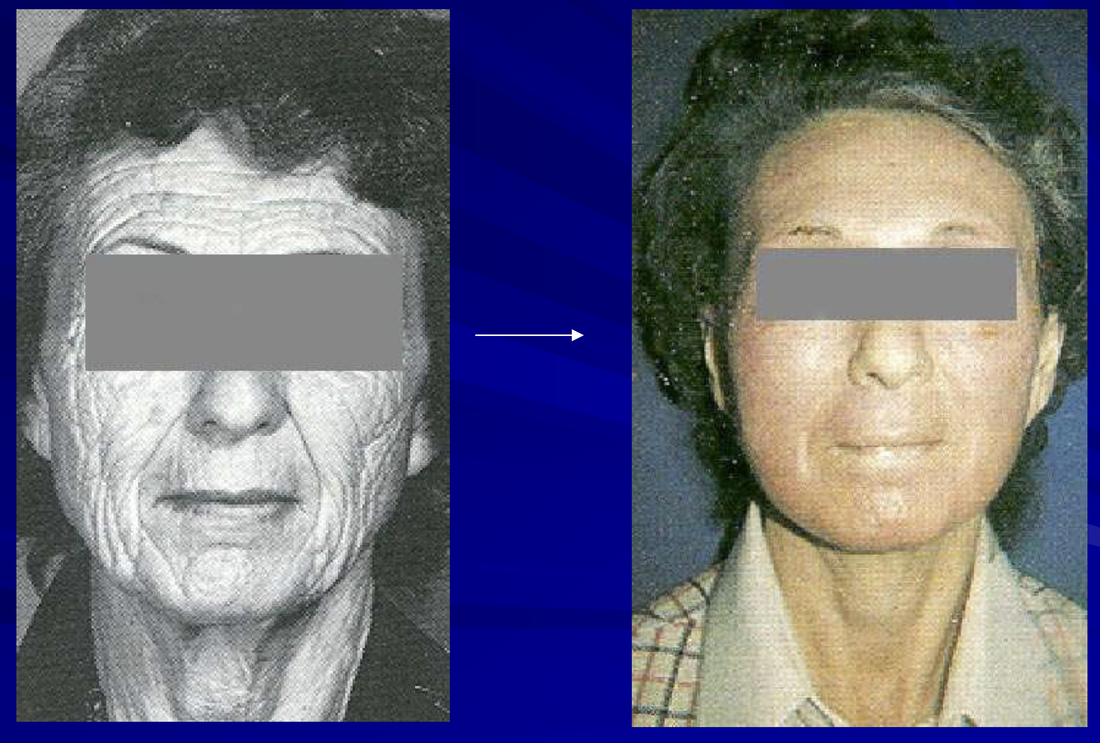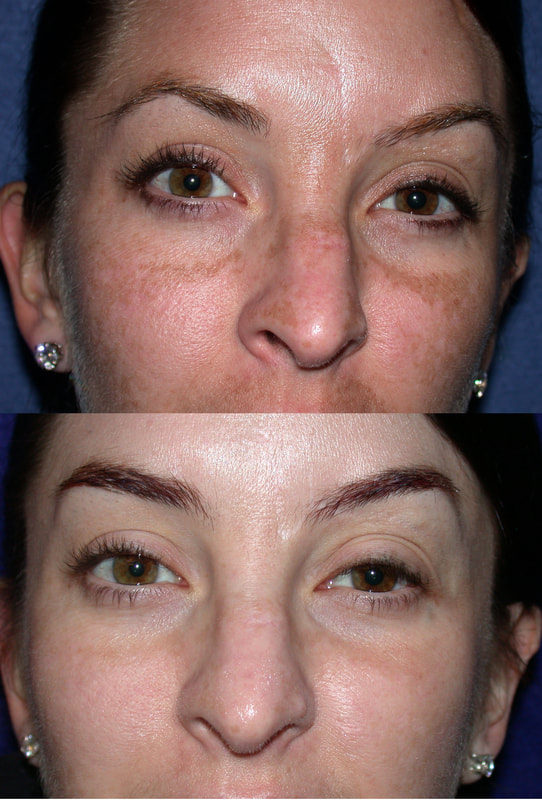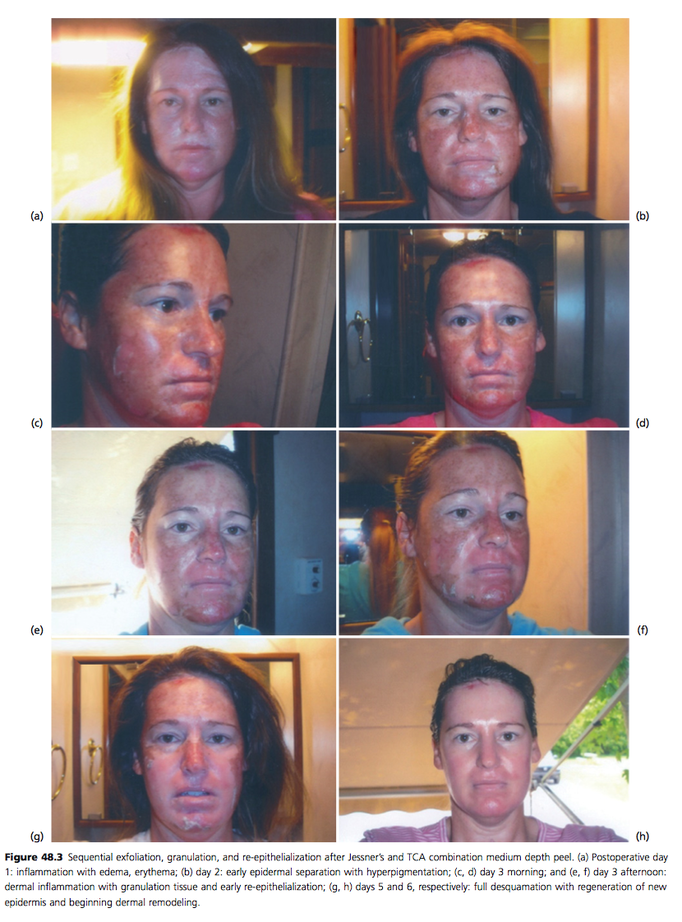what are chemical peels?
Chemical peels are powerful modalities that can be used in combination with other treatments like lasers to give an excellent improvement in the appearance and texture of the skin. By and large, they are non-toxic chemicals which penetrate the skin to depths that can be determined by the choice of material used, the concentration and the “dwell time” in some cases. An experienced surgeon who knows the physiology and anatomy of skin and the nature of the necessary chemicals can give beautiful results.
Are Chemical Peels New?The Egyptians and Indians are known to have used chemical peels of varying kinds, derived from fruits and vegetables more than 2000 years ago. What is new is our understanding of the skin and its response to graded treatment and also our understanding of the different types of chemical peels one can use.
|
What are trichloroacetic (tca) peels for?TCA peels are most commonly used:
To reduce brown spots and age spots Improve the texture of leathery, sun damaged skin & impart more glow To improve melasma To treat some types of acne To reduce fine lines |
What are (TCA) peels?
|
TCA is a non-toxic chemical (trichloracetic acid), which has been used to perform skin peels for over 30 years. It is a relative of vinegar (acetic acid.) When TCA is applied to the skin, it causes the top layers of cells to dry up and peel off over a period of several days to one week. When the old skin is peeled off, it exposes a new layer of undamaged skin, which has a smoother texture and more even color.
TCA peels are often applied repeatedly every few weeks with topical anti-pigment creams (like hydroquinones and other prescription creams) used between the peels to modulate the pigment cells. In this manner, difficult conditions like melisma can be controlled if not completely cured. People make the mistake of using lasers for everything: melisma is almost always WORSENED with lasers. |
There are peels that penetrate superficially (glycolic acid peels, Jessner peels) and those that penetrate deeper (TCA peels, Gordon-Baker peel, etc). Therefore, these peels should be planned after examining the skin and after due consideration to the skin type and possible response. When in doubt, a smart surgeon always performs a “test patch”, often behind the ear to ensure that the response is as hoped for.
How do (tca) Peels work and what are the different depth peels?
|
All peels work by removing a layer of sun damaged skin. Superficial or “light” peels remove only the top layer, mostly the layer of dead skin called the stratum corneum. Progressing from medium to deep peels, the layer of skin removed is greater with each increase in strength of the peel solution. The stronger the peel solution the greater the risk of complications like uneven pigment or even scarring.
TCA peels can be done at different depths from shallow to deep. Certain types of problems and certain types of skins do better with peels than with lasers. Although we have many different types of lasers and the word LASER is sexy, there is a time and place for the different modalities of treatment. Lighter TCA peels are usually done in a series of 2 or 3 for best results. This is similar to other light peels that usually involve hydroxy acids such as glycolic, salicylic, or a mixture of other hydroxy acids. Medium depth TCA peels are usually done once or twice a year and do require some downtime – usually about a week – when the peeling is obvious. Strong peels like the Baker-Gordon peel have about two weeks of down time and give excellent results in the appropriate patients. |
"Well, the last time I had a picture taken I could hardly see my eyes because of the weight of heavy eyelid. Then I paid attention to how I was actually using my eyes and I really noticed when I was looking at anything especially the computer I was straining my forehead to see better. Since I have had it done I no longer have to lift the forehead and tilt my head to see. It is amazing! I love..." D. Rock 63 Yrs Old with Fat Droopy Eyes - Salt Lake City, UT
What areas can be treated with tca peels
|
The face, neck, chest, back, arms, and legs. TCA peels may be very cost effective on the body because larger areas can be done at less cost than a laser. However, the risks of problems may also be greater unless the surgeon is very experienced with TCA peels on the body.
When considering peels of non-facial areas, it’s important to realize that these areas do not heal as well as the face, and the desired results are not as predictable. It is important to note that you should never peel more than a small percentage of the body at one time in order to avoid any chance of potential toxicity. Generally, the closer to the face, the faster the healing. Therefore, we use test patches often to determine the rate of healing in your particular case: safety first, always. What are some pros and cons of tca peels versus treating the same problem with a laserMany surgeons use lasers now rather than TCA peels because the lasers can be controlled more precisely, limiting complications. Peel solutions can be less predictable because the exact strength of the solution, the pre-peel clean (defatting), and the ability of the skin to absorb the peel solution are all variables that can be difficult to precisely control. However, with experience, excellent results may be obtained with peels.
Deep peels such as 35% TCA peels should only be performed by experienced surgeons and physians because of the risk of uneven absorption, blistering, and possible scarring. One mustn’t forget that peels will not manage vessels in the skin. In these patients with dilated or broken vessels as well as pigment changes and sun-related elastosis, the use of advanced IPL may be more suitable, although we often combine the two to get even better results. |
Another advantage to lasers is that many problems can now be treated with immediate return to normal activities. Medium depth TCA peels usually require some time off to heal.
how long do the effects of tca last?
This depends on the depth of the peel and the extent of your continuing sun exposure. Generally, the more superficial peels need to be repeated several times whilst the deeper ones have some down time but give more lasting results.
when will i see results from a tca peel?
As soon as you finish peeling you will see results. Your skin should continue to improve for 30-60 days
as long as you are protected from the sun.
as long as you are protected from the sun.
what does a tca feel like?
|
what will i look like right after treatment and what
will the healing time be?
|
You will usually peel for about one week with a medium peel. The skin will be a light yellow after the procedure for 1-2 hours. This color will gradually fade. The skin will be slightly redder for 2-3 days after the peel and feel tight.
Avoid all sun exposure. You will begin to peel approximately 48-72 hours after the treatment and the peeling will last generally 2-5 days. There is no pain but the skin looks as if it has a severe sunburn. You will be more sensitive to sunlight for 4-8 weeks after so don’t plan any sunny vacations for at least a month. |
"I had a excellent eye lift done by Dr. Patel. He knows what he is doing and is very pleasant. Dr.Patel was easy to get an appointment and he works with you. The office staff was very pleasant and made you feel calm." D. Gull Highly recommended for eye lift surgery - Salt Lake City, UT
what are the possible side effects and complications of tca peels?
Prior to your chemical peel, we may ask you to use a retin-A product and a hydroquinone: we will guide you. With deeper peels, we may prescribe a sedative and an oral narcotic pain medication which you will take an hour prior to your treatment. If you take either of these medications, you should not drive to or from your appointment.
You should be aware of all possible effects of peels (all of these may not apply to you as the depths of the peels vary):
You should be aware of all possible effects of peels (all of these may not apply to you as the depths of the peels vary):
- Pain. There is usually no discomfort after the peel, but, in case there is mild discomfort, pain medications can be provided.
- Redness. A pink or red coloration of the skin may persist for 2-4 weeks after a TCA peel. In rare instances, redness may persist for longer. This can occur all over or only in certain spots.
- Wound Healing. TCA peels cause a superficial wound to the skin that takes approximately 5-7 days to heal. Once the surface is treated, it may be pink and may be sensitive to the sun for approximately 2-8 weeks.
- Pigment Changes. The treated area may heal with increased or decreased pigmentation. This occurs most often in darker pigmented skin. The darker or lighter areas usually fade in three to six months, though pigment change can be permanent.
- Swelling. Immediately after the TCA peel, there will be mild to moderate swelling of the skin. This is a temporary condition and will resolve over two to three days.
- Scarring. There is a very small chance of scarring. This includes hypertrophic scars or, very rarely, keloid scars. Keloid scars are very heavy, raised scar formations. To minimize chances of scarring, it is important that you follow post-operative instructions carefully. It is important that any prior history of unfavorable healing be reported.
- Sun sensitivity. You will be sensitive to the sun for 6-8 weeks after the treatment and will need to protect your skin daily from the sun with sunscreen, hats and sunglasses.
- Accutane. Generally, you should not have a medium depth peel if you have used Accutane in the last 12 months.
- Cold Sores. If you are prone to herpes (cold sores, fever blisters), you may need a prescription for acyclovir or famvir prior to having medium depth Peel. You will need to avoid exfoliating treatments during a herpes breakout.
how should i care for my skin after tca peels?
|
Are all peels created equal? a local "Medspa" is offering chemical peels for a discount price. Is it possible to know if it's worth trying?
|
In the world of Dr. Groupon and Dr. Google, all sorts of promises will be made and you will be enticed by come-hither advertisements. It is absolutely fine to try out treatments as we are all aware of costs in this modern world of ours. Some guidance for you:
|
Questions we have been asked
“Please help: I had a TCA peel performed one month ago on my lower eyelids. On month later they are red/brown. My doctor prescribed hydroquinone 4%. I woke up this morning and they look very red on the area where the peel was performed. Should I keep using the hydroquinone cream and will the redness lessen over time? Thank you.
Redness this long after your TCA peel on your lower eyelids may be caused by the peel, but it may also be caused by the treatment you are applying. Eyelid skin is the thinnest skin in the body: it does not take kindly to irritants, especially after a treatment like a laser or chemical peel. In your case, it is possible that the hydroquinone may be acting as an irritant.
First, one must allow the peeled skin to heal: the best treatment is a bland moisturizer, even Vaseline. Keeping the skin moist allows it to heal more quickly. Depending upon your skin type and the depth of your peel, you may have hyperpigmentation of simply prolonged erythema. In some instances a topical steroid like Desowen 0.05% or Desonide 0.05% are much better than the hydrocortisone creams one applies elsewhere on the body.
We get a lot of call from patients with questions about results of surgery or treatments elsewhere. You should always ensure that your primary surgeon who performed the procedure has a chance to see you and advice you. If they are unable to help, we will be happy to see and examine you. Please bring a copy of your medical records with you if we are seeing you for treatment received elsewhere.
“I can only have my chemical peel at the end of my holiday and before I start work. I shall be returning from a week in the sun but will be wearing sunscreen every day! Is it safe to go ahead with the peel?”
This is a little like the “if I jump off the cliff without a parachute, am I likely to get hurt if I take the precaution of landing on some soft grass?” question. When undergoing elective, non-urgent, procedures to improve appearance, TAKE NO CHANCES! Irrespective of how much sunscreen you apply, a “holiday in the sun” will expose you to more ultraviolet light than a normal week driving, working indoors, etc. It is excellent that you will be using sunscreen, but allow any sun-related changes (tan, etc) to fade for a month (at least) before undergoing any laser or chemical peel treatment. If you have darker skin (Fitzpatrick type IV, V or VI), it may be necessary to wait longer and choose a milder peel. Also, remember that around June 21st the ultraviolet radiation is at its strongest in the northern hemisphere. Finally, there is always time to plan a conservative peel around natural breaks in your work schedule and get a reasonable result without going for broke after a summer holiday!
Redness this long after your TCA peel on your lower eyelids may be caused by the peel, but it may also be caused by the treatment you are applying. Eyelid skin is the thinnest skin in the body: it does not take kindly to irritants, especially after a treatment like a laser or chemical peel. In your case, it is possible that the hydroquinone may be acting as an irritant.
First, one must allow the peeled skin to heal: the best treatment is a bland moisturizer, even Vaseline. Keeping the skin moist allows it to heal more quickly. Depending upon your skin type and the depth of your peel, you may have hyperpigmentation of simply prolonged erythema. In some instances a topical steroid like Desowen 0.05% or Desonide 0.05% are much better than the hydrocortisone creams one applies elsewhere on the body.
We get a lot of call from patients with questions about results of surgery or treatments elsewhere. You should always ensure that your primary surgeon who performed the procedure has a chance to see you and advice you. If they are unable to help, we will be happy to see and examine you. Please bring a copy of your medical records with you if we are seeing you for treatment received elsewhere.
“I can only have my chemical peel at the end of my holiday and before I start work. I shall be returning from a week in the sun but will be wearing sunscreen every day! Is it safe to go ahead with the peel?”
This is a little like the “if I jump off the cliff without a parachute, am I likely to get hurt if I take the precaution of landing on some soft grass?” question. When undergoing elective, non-urgent, procedures to improve appearance, TAKE NO CHANCES! Irrespective of how much sunscreen you apply, a “holiday in the sun” will expose you to more ultraviolet light than a normal week driving, working indoors, etc. It is excellent that you will be using sunscreen, but allow any sun-related changes (tan, etc) to fade for a month (at least) before undergoing any laser or chemical peel treatment. If you have darker skin (Fitzpatrick type IV, V or VI), it may be necessary to wait longer and choose a milder peel. Also, remember that around June 21st the ultraviolet radiation is at its strongest in the northern hemisphere. Finally, there is always time to plan a conservative peel around natural breaks in your work schedule and get a reasonable result without going for broke after a summer holiday!
Schedule Your Consult Today |
Find UsLocations:
Dr. BCK Patel MD, FRCS 1025E 3300S Salt Lake City, Utah 84106, USA (801) 413-3599 (phone/text) E: [email protected] bckpatel.info Dr. BCK Patel MD, FRCS 585 E Riverside Dr Suite 201 Saint George, UT 84790 (435) 215-0014 E: [email protected] Quick-Link |
Let Us answer your questions |

